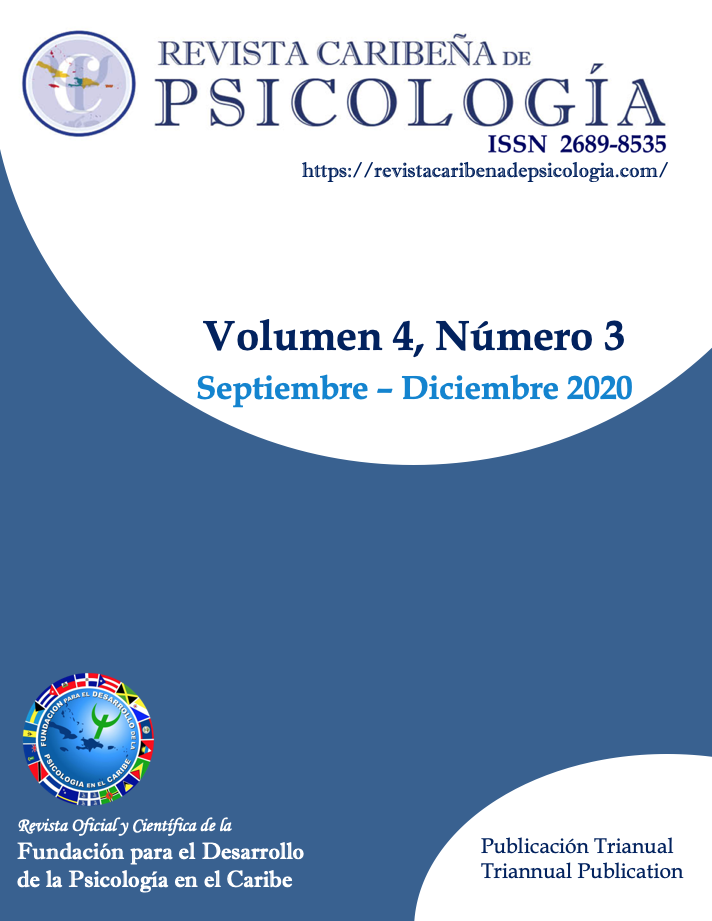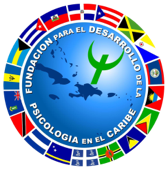Mediating Effect of Psychological Distress and Sexual Satisfaction in Puerto Ricans with Prostate Cancer
DOI:
https://doi.org/10.37226/rcp.v4i3.4953Keywords:
angustia psicológica, disfunción eréctil, calidad de vida, satisfacción sexualAbstract
Prostate cancer is the most diagnosed in the male population in Puerto Rico. However, it is little studied in the field of health, specifically in the field of clinical health psychology. This study is based on the biopsychosocial model, which supports the relevance of studying the condition and providing services from the interaction of biological, psychological, and social factors. Therefore, the present study examines whether emotional distress and sexual satisfaction mediate the relationship between erectile dysfunction and quality of life and if erectile dysfunction is related to the treatment. For this, a quantitative exploratory design was used. The sample was 44 patients between the ages of 50 to 86 years (M = 69.53, SD = 7.58 It was compiled by availability in different urologists' offices. For its collection, several meetings were held with specialists, a data collection logistics was established, in which the administrative staff identified the participants through their ICD 10 diagnoses. The participants completed four self-administered questionnaires, which most of them showed an appropriate Cronbach's Alpha. The results were coded and analyzed under the Statistical Package for the Social Science (SPSS) program. The results indicated that exist a low moderately significant relationship between treatment and erectile dysfunction (b = -0.35, 95% BcCI [-0.82, -0.03]) and that there is an indirect effect of psychological distress (b = -0.35, 95 % BcCI [-0.82, -0.03]) and sexual satisfaction (b = -.87, 95% BcCI [-2.18, -0.24] in the relationship between erectile dysfunction and the patient's quality of life. The preliminary data from the present study allow the offering of psychotherapeutic treatments focused on this population.
References
Abdulkhaleq, A.,Ghalib A., Naqeeb, A., & Aziz, A. (2017). Evalua-tion of prostate cancer health- related quality of life (specific scale) among a sample in Baghdad City. World Journal of Pharmaceutical Research 6(8), 61-75. https://1library.net/document/yr34mnpy-evaluation-prostate-cancer-health-related-quality-specific-baghdad.html
Ahumada, S., Lüttges, C., Molina, T., & Torres, S. (2014). Satisfacción sexual: Revisión de los factores individuales y de pareja relacionados. Rev. Hosp Clín Univ Chile, 25, 278-284. https://www.enfermeriaaps.com/portal/wp-content/uploads/2017/04/Satisfacción-sexual.-Revisión-de-los-factores-individuales-y-de-pareja-relacionados.pdf
Andersen, B. L., Farrar, W. B., Golden, D., Emery, C. F., Glaser, R., Crespin, T. et al. (2007). Distress reduction from a psychologi-cal intervention contributes to improved health for cancer patients. Brain, Behavior, and Immunity, 21(7), 953-961. https://doi.org/10.1016/j.bbi.2007.03.005
Arraras, J., Villafranca, E., Arias, F., Dominguez, M., Lainez, N., Manterola, A., Martínez, E., Romero, P., & Martínez, M. (2008). The EORTC Quality of Life Questionnaire QLQ-C30 (version 3.0). Validation study for Spanish prostate cancer pa-tients. Archivos Españoles de Urología, 6,949-954. http://dx.doi.org/10.4321/s0004-06142008000800017
Asociación Española Contra el Cáncer. (junio de 2011). Comunicación y Apoyo. https://www.aecc.es/SobreElCancer/CancerPorLocalizacion/CancerMama/viviendodiaadia/vidaenpareja/Paginas/sexualidad.aspx
Baggaley, R. F., Ganaba, R., Filippi, V., Kere, M., Marshall, T., Som-bié, I. et al. (2007). Detecting depression after pregnancy: The validity of the K10 and K6 in Burkina Faso. Tropical Medicine & International Health, 12, 1225-1229. https://doi.org/10.1111/j.1365-3156.2007.01906.x
Berríos, R., & Rivero, A. (2015). El cáncer prostático en la experiencia de pareja: La mujer como guardiana de la sa-lud. Interamerican Journal of Psychology, 49, 387-398. https://doi.org/10.30849/rip/ijp.v49i3.87
Bishop, G.D. (1994). Healthy psychology: Integrating mind and body. Allyn and Bacon.
Bjordal, K., de Graeff, A., Fayers, P. M., Hammerlid, E., van Pot-telsberghe, C., Curran, D., Ahlner-Elmqvist, M., Maher, E. J., Meyza, J. W., Brédart, A., Söderholm, A. L., Arraras, J. J., Feine, J. S., Abendstein, H., Morton, R. P., Pignon, T., Hu-guenin, P., Bottomly, A., & Kaasa S. (2000). A 12 country field study of the EORTC QLQ-C30 (version 3.0) and the head and neck cancer specific module (EORTC QLQ-H&N35) in head and neck patients. European Journal of Cancer, 36, 1796-1807. https://doi.org/10.1016/s0959-8049(00)00186-6
Brenlla, M. E., & Aranguren, M. (2010). Adaptación argentina de la escala de malestar psicológico de Kessler (K10). Revista de Psicología, 28, 311-342. http://revistas.pucp.edu.pe/index.php/psicologia/article/view/1464/1411
Cairney, J., Veldhuizen, S., Wade, T., Kurdyak, P., & Streiner, D. (2007). Evaluation of 2 measures of psychological distress as screeners for depression in the general population. Canadian Journal of Psychiatry, 52, 111-120. https://doi.org/10.1177/070674370705200209
Champion, D. J. (1981). Basic statistics for social research (2nd ed.). McMillan
Departamento de Salud de Puerto Rico. (2008). Boletín del Registro de Cáncer. Registro Central de Cáncer de Puerto Rico, 1, 1-7.
Engel, G. L. (1977). The need for a new medical model: A challenge for biomedicine. Science, 196, 129-136. https://doi.org/10.1126/science.847460
Fassaert, T., De Wit, M., Tuinebreijer, W., Wouters, H., Verhoeff, A., Beekman, A. et al. (2009). Psychometric properties of an interviewer-administered version of the Kessler Psychological Distress scale (K10) among Dutch, Moroccan and Turkish re-spondents. International Journal of Methods in Psychiatric Re-search, 18, 159-168. https://doi.org/10.1002/mpr.288
Figueroa, J. G., & Franzoni, J. (2013). Políticas públicas, varones y equidad de género: El uso de México dentro de una búsqueda multinacional. http://www.lazoblanco.org/wpcontent/uploads/2013/08manual/bibliog/material_masculinidades_0054.pdf
Figueroa, N. R., De La Torre, T., Torres, M., Pérez, J., Ortiz, K. J., Calo, W., Santana, M., & Rodríguez, S. (2008). Cáncer en los hombres. Boletín Registro de Cáncer de Puerto Rico, 1(3), 1-8. https://estadisticas.pr/files/Inventario/publicaciones/DS_BoletinVol1Num3CancerenlosHombres_2008_0.pdf
Franquet, E., García, C., Navarro, L., Palomino, A., Panisello, N., & Pardes, V. (2011). ¿Cómo afrontan los hombres la disfunsión eréctil?. Asociación Española de Enfermería en Urología, 118(abril/mayo/junio), 20-28.
Furukawa, T., Kessler, R., Slade, T. & Andrews, G. (2003). The performance of the K6 and K10 screening scales for psycho-logical distress in the Australian National Survey of Mental Health and Well-Being. Psychological Medicine, 33, 357-362. https://doi.org/10.1017/s0033291702006700
González, J. (2003). Construcción, cuestionamiento y reconstrucción del concepto masculinidad. Género, sociedad y cultura, 43-63.
González, E. G., Lorenzo, O., & De La Paz, Y. (2012). Cáncer de próstata y sexualidad. Acta Médica del Centro, 6, 102-105. http://www.actamedica.sld.cu/r2_12/pdf/prostata.pdf
Hayes, A. F. (2018). Introduction to mediation, moderation, and condi-tional process analysis: A regression-based approach. The Guilford Press.
Hernández, R., Fernández, C., & Baptista, P. (2006). Metodología de la Investigación. McGraw-Hill Interamericana.
Hides, L., Lubman, D. I., Devlin, H., Cotton, S., Aitken, C., Gib-bie, T. et al. (2007). Reliability and validity of the Kessler 10 and Patient Health Questionnaire among injecting drug us-ers. Australian and New Zealand Journal of Psychiatry, 41, 166-168. https://doi.org/10.1080/00048670601109949
Ibarra, G. (2017, febrero). La sombra del cáncer y su impacto en Puerto Rico. CB en Español. https://cb.pr/la-sombra-del-cancer-y-su-impacto-en-puerto-rico/?cn-reloaded=1
Instituto Nacional de Cáncer. (2020,). Diccionario de cáncer. https://www.cancer.gov/espanol/publicaciones/diccionario/def/eligard
Kenny, D. A. (2018). Mediation. http://davidakenny.net/cm/mediate.htm
Kessler, R., Barker, P., Colpe, L., Epstein, J., Gfroerer, J., Hiripi, E. et al. (2003). Screening for serious mental illness in the general population. Archives of General Psychiatry, 60(2), 184-189. https://doi.org/10.1001/archpsyc.60.2.184
León, J.M. (2014, septiembre). Fundamentos de la psicología de la salud. http://openaccess.uoc.edu/webapps/o2/bitstream/10609/78524/3/Psicolog%C3%ADa%20de%20la%20salud%20y%20calidad%20de%20vida_M%C3%B3dulo%201._Fundamentos%20de%20la%20psicolog%C3%ADa%20de%20la%20salud.pdf
Martínez, A., Fernández, C., Puga, A.P., López, O.M., Lucas, M., Granero, J., Fernández, I.M. & Hernández, J.M. (2020). Sexual experiences after non-nerve sparing radical prostatectomy. https://doi.org/10.37689/acta-ape/2020ao02375
Mas, M. (2005). Hipertensión arterial, medicación antihipertensiva y disfunción eréctil una perspectiva basada en la evidencia. Revista Internacional de Andrología: Salud sexual y reproductiva, 3, 13-30. https://doi.org/10.1016/S1698-031X(05)74684-7
Mayo Clinic. (2018, noviemebre). Disfunción eréctil y diabetes: Toma el control hoy. https://www.mayoclinic.org/es-es/diseases-conditions/erectile-dysfunction/in-depth/erectile-dysfunction/art-20043927
Medina , X., & Alvarado, S. (2011). Psicooncología: Una respuesta al malestar emocional del paciente oncológico. Healthcare Journal of Medicine, 3(2), 190-196. https://www.uroclinic.com.ec/psicooncologia-una-respuesta-al-malestar-emocional-del-paciente-oncologico/
Metz, J. (2018). Disfunción erectil después del tratamiento del cáncer. OncoLink. https://es.oncolink.org/apoyar/sexualidad-y-fertilidad/sexualidad/disfuncion-erectil-despues-del-tratamiento-del-cancer
Meza, M.P., Sánchez, C., & Mancilla, J. (2013). Relación médico-paciente con cáncer. http://www.scielo.org.mx/scielo.php?script=sci_arttext&pid=S0187-53372014000100007
Moscoso, M. (2011). El estrés crónico y la medición psicométrica del distrés emocional en medicina y psicología de la salud. Lib-erabit, 17, 67-76. http://www.scielo.org.pe/pdf/liber/v17n1/a08v17n1.pdf
National Institutes of Health. (1993). Impotence [consensus de-velopment panel]. Journal of the American Medical Association, 270, 83–90. http://dx.doi.org/10.1001/jama.1993.03510010089036
Oblitas, L (2010). El cáncer de próstata localizado, la calidad de vida y el ajuste marital . Cengage Learning. https://books.google.com.pr/books?id=LXR_dkV_XNcC&pg=PA550&lpg=PA550&dq
Oraa, N., Sánchez , M., Ossola, G., Vélez, E., Cevas , F. J., & del Pino, N. (2013). Eficacia de las intervenciones psicológicas en hombres con cáncer de próstata. Psicooncolgía, 10, 339-351. http://dx.doi.org/10.5209/rev_PSIC.2013.v10.n2-3.43454
Pavía, N., López, N., & Vera, L. (2012). Disfunción eréctil en pacientes con enfermedades crónico degenerativas y metabólicas en una población rural de Yucatán, México. Revista Mexicana de Urología, 72(5), 240-244. https://www.elsevier.es/es-revista-revista-mexicana-urologia-302-pdf-X2007408512679435
Pérez, F. (2013). Nueva escala de satisfacción sexual (NSSS) en usuarios de redes sociales [Trabajo fin de Master, Universidad de Almería]. Archivo digital. http://repositorio.ual.es/bitstream/handle/10835/2366/Trabajo.pdf?sequence=1&isAllowed=y
Pino, C. E. (2010). Disfunción sexual en pacientes con cáncer. Revista de los Estudiantes de Medicina de la Universidad Industrial de Santander, 23, 126-133. https://revistas.uis.edu.co/index.php/revistamedicasuis/article/view/1441/1844
Registro Central de Cáncer. (2010). Incidencia de cáncer en Puerto Rico. Departamento de Salud Gobierno de Puerto Rico. http://www.salud.gov.pr/Estadisticas-Registros-y-Publicaciones/Pages/Registros/Registro-de-C%C3%A1ncer.aspx
Rivera &Berrio (2016). El cáncer de próstata y la construcción social de la masculinidad en Puerto Rico. Psicología, Conoci-miento y Sociedad 6, 164-190.
Rodgers, J., Martin, C., Morse, R., Kendell, K. & Verrill, M. (2005). An investigation into the psychometric properties of the Hospital Anxiety and Depression Scale in patients with breast cancer. Health and Quality of Life Outcomes, 3, 41-53. https://dx.doi.org/10.1186%2F1477-7525-3-41
Román, W. (2020, junio). Uno de cada siete hombres tendrá cáncer de próstata en Puerto Rico. MSP Medicina Salud Pública. https://medicinaysaludpublica.com/uno-de-cada-siete-hombres-tendra-cancer-de-prostata-en-puerto-rico/
Rosen, R. C., Riley, A., Wagner, G., Osterloh, I. H., Kirkpatrick, J., & Mishra, A. (1997). The international index of erectile func-tion (IIEF): a multidimensional scale for assessment of erectile dysfunction. Urology, 49(6), 822-830. http://dx.doi.org/10.1016/s0090-4295(97)00238-0
Schmitz, N., Lesage, A. & Wang, J. L. (2009). Should psychological distress screening in the community account for self-perceived health status? Canadian Journal of Psychiatry 54(8), 526-533. https://doi.org/10.1177/070674370905400805
Selli, C., Bjartell, A., Burgos, J., Somerville, M., Palacios, J.M., Ben-jamín, L., Black, L., & Castro, R. (2014). A One-Year, Pan-European Observational Study. Hindawi Publishing Corporation Prostate Cancer. https://doi.org/10.1155/2014/472949
Sierra, C. R., Sánchez, D., & de Pablo, A. (2015). Calidad de vida de pacientes con cáncer de próstata en tratamiento con bloqueo androgénico continuo vs intermitente: Estudio prospectivo mediante la aplicación del cuestionario CAVIPR. Anales del Sistema Sanitario de Navarra, 38(2), 193-201. http://scielo.isciii.es/pdf/asisna/v38n2/original2.pdf
Sierra, K. L., Viveros, C., Martínez, G., Hernández, O., & Caballero, G. (2014). Calidad de vida en pacientes con cáncer de próstata, operados de prostatectomía radical laparoscópica. Revista Mexicana de Urologia, 74(3), 133-140. http://dx.doi.org/10.1016/S2007-4085(15)30027-6
Sociedad Americana del Cáncer. (2015). ¿Qué indican las estadísticas clave sobre el cáncer prostático?. http://www.cancer.org/espanol/cancer/cancerdeprostata/guiadetallada/cancer-de-prostata-what-is-key-statistics
Sociedad Americana del Cáncer. (2016, Febrero). Qué es el Cancer de Prostata?. Sociedad Americana del Cáncer. https://www.cancer.org/es/cancer/cancer-de-prostata/acerca/que-es-cancer-de-prostata.html#referencias
Song, L. (2009). Couples communication and quality of life during prostate cancer survivorship. [Unpublished Dissertation]. The University of Michigan, Michigan.
Soria, J.M., Carrasco, J.G., Loza, C., Ruíz, E., & Payet, E. (2015). Adaptación cultural y validación psicométrica del cuestionario de calidad de vida EORTC QLQ STO-22 para los pacientes con cáncer gástrico en el Perú. Revista Gastroenterología en Perú, 35, 127-136.
Sousa, A. D., Sonavane, S., & Metha, J. (2012). Psychological as-pects of prostate cancer: a clinical review. Prostate Cancer and Prostatic Disease, 15, 120-127.
Telöken, C. (2001). Management of erectile dysfunction second-ary to treatment for localized prostate cancer. Cancer Control, 8, 540-545. http://dx.doi.org/10.1177/107327480100800609
Twitchell D.K., Wittmann, D.A, Hotaling, J.M., & Pastuszak, A.W. (2019). Psychological impacts of male sexual dysfunction in pelvic cancer survivorship. Sex Med,7, 614–626. https://doi.org/10.1016/j.sxmr.2019.02.003
Wittmann, D., Northouse, L., Foley, S., Gilbert, S., Wood, D.P., Balon, R., & Montie, J.E. (2009). The psychosocial aspects of sexual recovery after prostate cancer treatment. International Journal of Impotence Research, 21, 99–106. https://doi.org/10.1038/ijir.2008.66
Zavala, D., Tortolero, G., Torres, C. R., Alvarado, M., Traverso, M., Román, Y., & Ortiz, K. J. (2015). Cáncer en Puerto Rico, 2008-2012. Registro Central de Cáncer de Puerto Rico.
Published
How to Cite
Issue
Section
License
Copyright (c) 2020 Carmen Otero

This work is licensed under a Creative Commons Attribution 4.0 International License.







